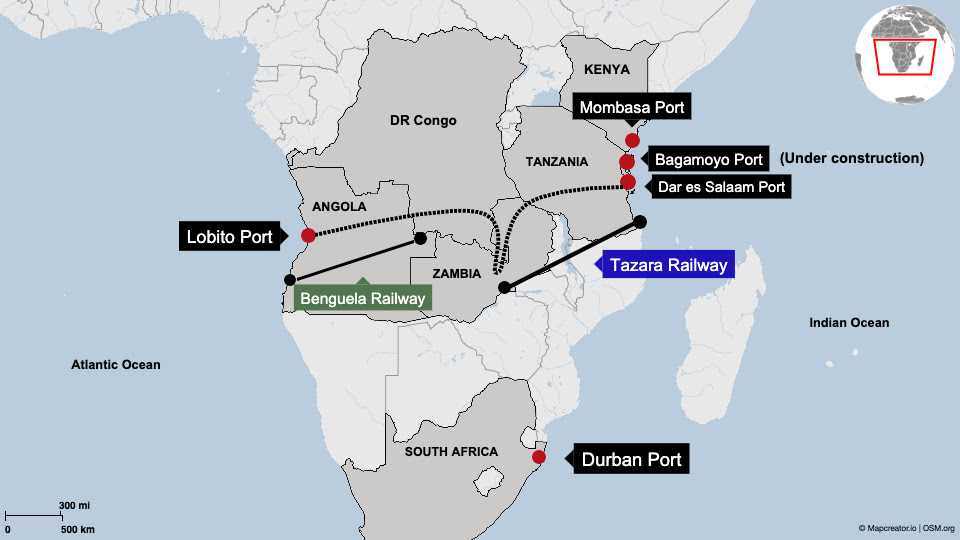An $850 million road development project connecting the Democratic Republic of Congo’s (DRC) copper and cobalt mining region to East Africa’s Indian Ocean coast has broken ground.
The presidents of DRC and Zambia officiated a ceremony to launch the construction of a key bridge for the route across the countries’ borders. Once complete, the upgraded highway network will significantly shorten transport times from Congo’s mining hub of Lubumbashi to the Tanzanian port of Dar es Salaam.
The project entails modernising and expanding 114 miles (184 km) of roadway linking an existing crossing over the Luapula River between the DRC and Zambia. A new 345-meter bridge will also be constructed parallel to the current structure, built in 1934.
Together, these enhancements are projected to slash over 150 miles (240 km) off the journey from Lubumbashi to Dar es Salaam compared to the present route.
Currently, trucks ferrying copper and cobalt from mines in Congo’s Copperbelt must take a lengthy detour south through Zambia. The new direct road will avoid this diversion and remove multiple border crossings.
For hauliers leaving Lubumbashi, the driving time to Dar es Salaam is expected to fall from at least four days presently to about two and a half days. Congestion and delays are also projected to ease.
The Democratic Republic of Congo possesses vast copper, cobalt and other mineral reserves. However, poor infrastructure has hampered mining development and integration into global supply chains.
Currently, almost all output is transported by road from Lubumbashi over an outdated network to reach Tanzania’s Indian Ocean ports. The journey traverses multiple countries, borders and congested segments.
By providing a shorter, high-capacity route, the new highway will slash transportation costs and delays for mining companies. This could incentivise further investment and production in Congo’s mineral-rich southeast.
For Zambia along the corridor, the infrastructure upgrade brings opportunities to tap trade flows passing through its territory. The project complements Zambia’s push to develop export-oriented special economic zones and industrial parks.
Landlocked Uganda also stands to benefit, gaining a more efficient connection from its emerging oil fields around Lake Albert to East Africa’s seaborne trade gateways.
The Luapula Bridge groundbreaking represented a milestone for tripartite cooperation between the DRC, Zambia and Tanzania. The leaders hailed the project as a model for collaborative infrastructure development unlocking shared prosperity.
With construction underway, the focus now shifts to timely implementation and realising the expected benefits of reduced transport costs, expanded trade volumes and improved regional connectivity.

